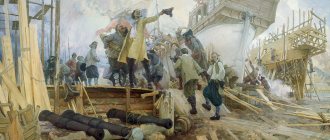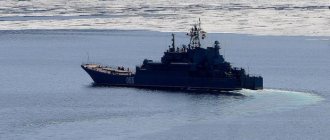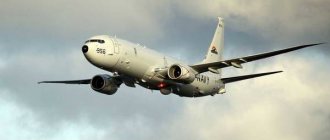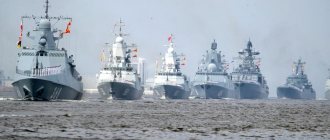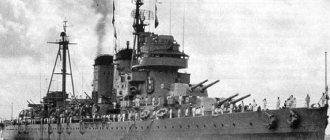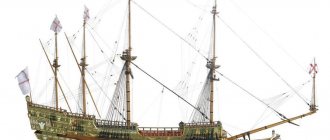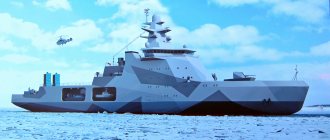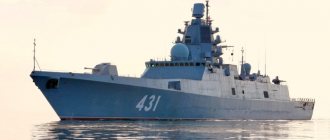Fleet humus.livejournal.com, Vessel, Fleet
In the Russian sailing fleet, classification of ships
was determined mainly by the main combat purpose of this class (battleship, bombardment ship, floating battery, or by the characteristics of the sailing weapons (frigate, brigskoe).
The appearance of steam and then armored ships required a revision of the existing classification and the inclusion of new classes with names specially developed for them. Initially, for this they tried to use the names of already existing classes of the sailing fleet with the addition of elements inherent in new ships (armored battery, steam frigate, armored frigate, turret armored boat). Sometimes a new class was named after the lead ship of this class (monitor, cruiser); in other cases, class names were borrowed from foreign navies. With the beginning of the use of mine and torpedo weapons, new classes of warships were born - mine boats, torpedo boats and torpedo boats.
In the first thirty years of the existence of the Russian armored fleet (1861-1891), there was no strictly established classification of ships. The fleet included sailing, sailing-armored and armored ships, and their distribution was carried out both by class of sailing and armored fleet.
At the beginning of glorious deeds
The first name of the Russian fleet is “Eagle” (1667), built under Alexei Mikhailovich. There were many “Eagles” in the Russian fleet later, including “northern” ones, and even three times - in the “Nord Adler” version. In its pure form, it was carried by two ships: the first domestic screw battleship of a special construction (1855) and a squadron battleship (1903), and in addition - a hospital ship (1890) and an auxiliary cruiser (1910).
The first series of Peter the Great's fleet laid the foundation for Russian caronymy for many decades and gave rise to a number of curiosities. Since, in accordance with the then tradition, the ship received a name along with a motto, among the ships of Pyotr Alekseevich’s Azov flotilla a barcalon “Three Glasses” was formed with the motto “Keep everything in moderation.” In the same row were "Light Iron", "Hare Run", "Chair" and "Scales", as well as foreign caronyms like the Dutch "Wingelgaak" or the chimerical "Goto Predestination" (a Latin-German mixture meaning "God's destiny") .
The system began to emerge in the second decade of the 18th century, when Peter began building the Baltic Fleet. A large block of names was dedicated to religious themes; it was popular until the end of the 19th century.
A fragment of an engraving depicting the battleship Goto Predestination
Engraving by Adrian Schonebeck / Wikipedia
The names of archangels (“Gabriel”, “Yagudiel”, etc.) and revered saints appeared on the sides of the ships. There were also more complex versions: “Three Hierarchs” and “Holy Myrrh-Bearing Women” (specifically in the genitive case, although later the nominative case was also encountered), “The Epiphany of the Lord.” Around 1800, the "Conception of St. Anne" is discovered.
One of the most famous karonyms of the Russian fleet, “Don’t touch me,” belongs to the same group (it was worn by six ships built between 1725 and 1864). It goes back to the Gospel of John: “Do not touch Me, for I have not yet ascended to My Father,” this is how the resurrected Christ addressed Mary Magdalene (“Mary Magdalene” was also in the fleet). It is characteristic that in 1941-1942 the floating battery of the Soviet Black Sea Fleet bore the same name.
From the very beginning, the fleet perpetuated the victories of Russian weapons. So, already in the 1710s, “Poltava”, “Lesnoye”, “Gangut” appeared. This tradition will continue until the end of the empire and will outlast it.
Floating ironclad battery "Touch Me Not", built in the 1860s.
Photo: Wikipedia
Cruiser "Budyonny"
The authors of World of Warships periodically give a second life to ships designed on paper, but not built in reality. To avoid mistakes, they use real drawings and a lot of archival and historical materials. One of these ships that appeared in World of Warships in April 2016 is the Project 94 cruiser or “Budyonny”, as the developers dubbed it.
The People's Commissariat of Defense of the USSR planned to build several dozen Project 94 light cruisers to support destroyers in attack, reconnaissance, patrol and raid operations, protect and cover linear forces from enemy destroyers, and participate in mine laying.
During the discussion of the technical specifications, it was decided that the cruiser would receive powerful weapons, an air defense system, and a pair of torpedo tubes. It was not possible to build at least one ship in this series due to the outbreak of the Great Patriotic War, but with modern technologies we can see this ship in World of Warships.
This cruiser has a very high speed for its tier, a fairly powerful main gun and, more importantly, a high turret traverse speed.
Coupled with a long firing range and strong armor, the player can conduct artillery duels at a comfortable distance, avoiding close combat. Firing high-explosive fragmentation shells is extremely effective, and if necessary, Budyonny can fire a couple of torpedoes from each side.
The Budyonny also has its drawbacks - its enormous length, which makes it very easy to catch a torpedo on the side, as well as its high profile along with its large width. In this regard, the cruiser takes quickly and a lot of damage during artillery duels with opponents, and is also afraid of air raids due to a weak air defense system.
Of course, we can only guess how the Budyonny would perform in a real battle, but in World of Warships this ship is best suited for destroying other cruisers and battleships at maximum firing range, which requires considerable skill from the captain.
Frigate drivers
As the fleet was built, in the middle of the 18th century and beyond, the tradition organically changed. Petrine “bends” and other foreignness in caronymy have basically disappeared; the names of saints and Slavic princes (“Vladimir”, “Svyatoslav”, “Yaroslav”, “Vsevolod”, etc.) were most often used. Adjectives appear as names of frigates (“Solid”, “Brave”, etc.)
It would not have been possible without courtship in the form of “Catherine’s Glory” - by the way, which quite quickly became the “Transfiguration of the Lord”, and at the personal request of the Empress. There were two "Counts Orlov" (1770 and 1791).
After the War of 1812 and foreign campaigns, new victories were briefly added to the victories inscribed on the sides of the ships of the Russian fleet: “Paris”, “Fershampenoise” (spelling preserved), “Leipzig”, “Kulm”, “Red”. Around the middle of the 19th century, old victories of Peter the Great began to be lost - for example, Lesnoye and Friedrichstadt.
At the beginning of the 19th century, signs of seriality appeared in the names - for example, in the 1830s, three “goddesses” were built: the frigates “Aurora”, “Pallada” and “Diana”. In the middle of the century, among the names of frigates and corvettes, various “Varyags”, “Vityazis”, “Oslyabi” and “Peresvets” were established.
Image: Alexey Bogolyubov, “Frigate “Pallada”, 1847”, Watercolor on paper. 25.2 x 35 cm
An interesting place in the politically determined caronymy of the empire was occupied by the battleship of the Black Sea Fleet “Sultan Mahmud” (1837), named in honor of the Turkish monarch and in commemoration of the conclusion of the Treaty of Adrianople in 1829.
Cruiser "Mikhail Kutuzov"
With the end of World War II, the arms race only accelerated. The war showed the shortcomings of every ship that was on duty in the USSR Navy, so the party decided to update the fleet.
Taking into account the military experience gained, the USSR Design Bureau created ships that were impressive in their tactical and technical characteristics. One of them is the light cruiser Mikhail Kutuzov, Project 68 bis, launched in 1952 and capable of projecting the strength and power of the USSR almost anywhere in the ocean.
During its combat service, this ship made 15 long-distance voyages, participated in exercises, rescue operations, parades and holidays. During the Cold War, during the Arab-Israeli conflict of 1967, the ship carried military specialists from the Soviet Union to help the armed forces of Egypt and Syria.
The cruiser "Mikhail Kutuzov" in World of Warships, like its prototype, is equipped with a best-in-class air defense system, a high firing range, powerful armor-piercing shells and a good chance of arson. In addition to the main four three-gun turrets, the cruiser can use 5 torpedo tubes.
For its good combination of firepower, speed and maneuverability, this cruiser enjoys the well-deserved love of players. And its powerful air defense makes it a very dangerous adversary for aircraft carriers, which can lose up to ¾ of their aircraft when trying to attack the Mikhail Kutuzov.
According to players, the cruiser "Mikhail Kutuzov" is excellent at dealing with enemy battleships, thanks to its smoke generator, it is not afraid of close combat and can rain fire due to the high rate of fire of its guns. But the size of this ship, as well as low armor, do not allow it to participate in solo duels, and the cruiser is also very slow and cannot run away from the enemy or catch up with the retreating one.
Trophies
There were several karonyms in the imperial fleet that were transferred from captured ships. The most famous is "Retvizan". This name (translated as “Justice”) was borne by a Swedish battleship captured during the Battle of Vyborg in 1790 and included in the Russian fleet. Subsequently, it was received by two more sailing (1818 and 1839) and one screw (1855) battleships. The most famous is the last bearer of this name - an American-built squadron battleship (1901), which was lost during the defense of Port Arthur.
This is followed by other Swedish acquisitions of the same period - Venus, Avtroil and Wachtmeister. It is characteristic that the first of them appeared in the Russian fleet before that - this was the name of one of the galleys built in the 1730s. However, this name became a trophy name after 1789, when the Mercury boat captured the Swedish frigate of the same name. (The same frigate Venus, by the way, captured the Retvizan a month later.) Subsequently, the fleet built another Venus in 1828.
Image: Karl Scharenberg, “Capture of the Swedish battleship Retvisan by the frigate Venus on June 23, 1790”
"Avtroil" comes from "af Trolle" (in honor of the Swedish navigator Georg Hermann af Trolle), the name of another frigate captured in 1789. After it, two more sailing frigates of the same name were built (1811 and 1819), and the last to receive this name was the Novik-class destroyer (1917).
Also included among the trophies is the name “Hazard”, which was borne by the French xebec captured in 1806 by Admiral Senyavin. Its heir is another “novik”, inherited by the Soviet fleet (first under the name “Zinoviev”, then “Artem”) and died already during the Great Patriotic War, having been blown up by a mine during the Tallinn crossing in 1941.
Cruiser Aurora"
This ship is a real legend, still in service in the Navy and an object of Russian cultural heritage, because many important events for the country that occurred in the 20th century are associated with it.
The Aurora belongs to the Diana class cruisers, the first series of this class designed and built by the Russian Empire, launched in 1900. At the start of the Russo-Japanese War, the tactical and technical characteristics of the Aurora lagged behind its competitors in its class, but its powerful armor and armament still made it a dangerous adversary.
At the beginning of her long life, the Aurora took part in the Battle of Tsushima, in which, during a fierce battle, the fleet of the Russian Empire suffered a crushing defeat from the Japanese squadron, and the cruiser only miraculously survived. Having received many holes, the team was forced to leave for Manila, where they stayed until the end of the war. During the First World War, the Aurora had the opportunity to participate in real combat only at the beginning of 1916. The ship was used to repel German air raids, which, given the characteristics of fighters and bombers of that time, should not be surprising.
Already in September, the Aurora was sent to Petrograd for repairs. The situation by that time had become tense, communist ideas had penetrated the ranks of soldiers and sailors, which no one was addressing. It is not surprising that the latter rebelled on the ship and went under the red banner.
On November 7, 1917, with a blank shot from the Aurora cannon, the October Revolution began, signaling the Bolshevik detachments to begin storming the Winter Palace and having a psychological impact on its defenders. The echo of this shot still reverberates today.
After the end of the civil war, the communists needed a symbol of the revolution, and the Aurora was perfect for this - the ship was restored and sent in 1924 on a long voyage under the Soviet flag. Since then, the cruiser has acquired the most important political and ideological status.
In 1941, Aurora guns were used to defend Leningrad. The cruiser's guns were removed and installed in positions around the city as artillery batteries, one of which was mounted on an armored train. They also removed all other weapons that could be taken into battle. The cruiser itself remained in the city's military port and was later used by Red Army soldiers to repel Nazi air raids.
In World of Warships, the Aurora is reminiscent of its youth, driving opponents around the theater of operations with its many guns and providing good artillery support to its allies. At a safe distance, the cruiser can easily cope with enemy destroyers and can ram an unlucky enemy thanks to its high-quality armor.
However, the Aurora also has disadvantages - low speed and fire resistance, poor maneuverability and the lack of anti-mine caliber guns. Consequently, it will not be able to withstand a direct duel with a ship of its class.
Guards memory
The two caronyms were not just arbitrarily renewed from generation to generation, but were officially passed along with the St. George flags, building a pattern of succession.
The name “Azov”, common in the Russian fleet (in honor of one of the battles of Peter I), received a rebirth after the Battle of Navarino in 1827. The battleship with this name that distinguished itself in it gave the fleet a new combination “Memory of Azov” - this is how the ships that passed the St. George flag of “Azov” began to be called. These were two sailing battleships (1831 and 1848) and an armored cruiser (1890).
Two years later, in 1829, the brig Mercury distinguished itself in a battle with two Turkish battleships and also received the St. George's flag. This is how the second honorary name turned out, passing along with the flag: “Memory of Mercury.” It was worn by a corvette (1865), a sail-screw cruiser (1883), and since 1907 it was called the armored cruiser “Cahul”. In 1965-1995, the small hydrographic vessel “Memory of Mercury” served in the USSR Black Sea Fleet (sold to a private owner, sank near Sevastopol in 2001).
Sailing-screw cruiser "Memory of Mercury" in the Sevastopol roadstead.
Photo: photographer.ru
Moreover, even before that, in the 18th-19th centuries, the Russian fleet operated three sailing ships at once under the similarly designed name “Memory of Eustathius”, which, however, did not have the St. George flag. They were named in honor of the battleship "St. Eustathius Plakida", which was lost in the Battle of Chesma in 1770. The tradition was either broken or, on the contrary, resumed at the beginning of the 20th century, calling one of the Black Sea battleships simply “Eustathius”.
Cruiser "Varyag"
This ship entered its name into history on February 9, 1904, at the beginning of the Russo-Japanese War, when a Japanese squadron blocked Russian ships in the port near the city of Chemulpo (now Incheon, South Korea), followed by a proposal to capitulate.
“Our proud Varyag does not surrender to the enemy, no one wants mercy,” as the song says, the RI fleet, consisting of the Varyag and the gunboat Koreets, took on battle with superior enemy forces - 6 cruisers and 8 destroyers. The decision is brave and crazy at the same time. Here's how it happened:
The large, sleek wartime olive-painted cruiser gradually increased its speed.
A plume of coal smoke from four chimneys trailed behind him in the cold air like a wide black stripe. At 11:25 a.m., large, three by four meters, blue and white banners of battle flags flew up from the topmasts of both masts of the ship. A small island opened up ahead of us, and to the right of it the gray silhouettes of Japanese cruisers emerged from the haze.Exactly at 11:45, two huge columns of water with clouds of black smoke shot up to the left of the Varyag’s bow. The sound of the salvo came later: the enemy began shooting from 8.7 kilometers. For the first time in half a century, a 1st rank ship of the Russian Imperial Navy entered into battle with the enemy. The cruiser "Varyag" went into battle, which made its name immortal.
Here's how the Japanese side commented on this legendary battle:
On February 9, “Varyag” and “Koreets” entered into battle with our forces.
If we compare the artillery power of the sides, taking as a basis the number of shells fired per minute from one side, then, taking the “Varyag” as a unit, we outnumbered the enemy by 5.35 times. The actions of the Russian ships, which fought to the last, cannot but arouse admiration. In such situations, they usually throw out the white flag and capitulate.
According to historians, the Russian sailors realized that they had no chance of victory, but without hesitation they accepted the battle and broke through the Japanese siege, fulfilling their military duty to the end. When it comes to personal courage, the Japanese are undoubtedly very knowledgeable.
During the battle, the “Varyag” received serious damage and, together with the “Korean”, which was not injured in the battle, returned to the port, after which the teams decided to sink their ships. All participants in the battle were awarded medals of the Russian Empire, as well as a medal specially established for the occasion “For the battle of “Varyag” and “Korean””
, later, during the USSR, with medals “For Courage”.
The authors of World of Warships carefully transferred the spirit of the Varyag into the game, making it a fast and maneuverable ship with a high rate of fire for its guns. This is not a typical powerful cruiser, but a support ship, the potential of which is revealed in joint actions with an allied squadron thanks to powerful (for level 3) fire support.
In close combat, the Varyag can quickly knock out the superstructures and guns of an enemy ship without fear of losing its combat effectiveness thanks to its good armor. At the same time, it remains vulnerable to duels with destroyers and battleships. If the holes are too large, you can always show courage and go to ram the adversary.
New fleet time
By the time the empire decided that enough was enough in February 1917, the navy had already created a more or less coherent, although not without exceptions, system for naming ships. It harmoniously combined the vertical tradition of transmitting historical names with a horizontal division between classes of ships, and also developed intensively, inventing caronyms for ships of new classes.
Battleships (battleships and dreadnoughts) were named after the monarchs of the ruling house (from "Peter the Great" to "Empress Mary", but with the exception of the Romanovs of the 17th century), a much reduced group of religious caronyms ("John Chrysostom", "Panteleimon", "George" Victorious", "Twelve Apostles", "Three Saints", "Sisoi the Great", "Andrew the First-Called"), as well as in honor of the victories of Russia and cities of military glory ("Poltava", "Chesma", "Gangut", "Petropavlovsk" , “Borodino”, “Navarin”, “Sevastopol”, etc.).
Exceptions were traditional names like “Glory”, “Victory”, “Eagle” and “Tsarevich”, which refers to the symbols of the monarchy. Of the Slavic princely karonyms of the 18th century, the battleships of the empire received only “Rostislav”. There, on the Black Sea, “Prince Potemkin-Tavrichesky” appeared.
Squadron battleship "Poltava"
Photo: archive of photographs of ships of the Russian and Soviet Navy
The cruisers took, firstly, all the characteristic pre-imperial and legendary caronymy: “Varyag”, “Rurik”, “Askold”, “Oleg”, “Bogatyr”, “Rynda”, “Svetlana”, “Vityaz”, “Bayan”, “Novik”, “Boyarin”, “Gromoboy”, as well as “Dmitry Donskoy” and “Vladimir Monomakh”. The exceptions were "Oslyabya" and "Peresvet", which formally went to the battleships, but they were, in fact, overgrown armored cruisers, so the tradition was preserved in a certain way.
Secondly, “admiral” names were adopted, concentrated in a series of light cruisers (in honor of Nakhimov, Kornilov, Spiridov, Greig, etc.). This tradition was relatively young: the first “admirals” (in the form of armored frigates) appeared in the fleet only in the 1860s.
Thirdly, the original series of “goddesses” was preserved: after 1905, a new “Pallas” was built to replace the one that died in Port Arthur, and the “Aurora” and “Diana” that returned from the war continued to serve.
Fourthly, a special tradition was formed of naming small cruisers (second rank) after the names of precious stones (“Pearl”, “Emerald”, “Diamond”).
As an exception, the cruisers were named in honor of victories - “Ochakov” and “Kahul”, also known as “Kahul” and “Memory of Mercury” after the Sevastopol uprising of 1905.
Destroyers were mostly called by adjectives, but traditionally they also took on the names of famous naval officers: “Captain Izylmetyev”, “Lieutenant Pushchin”, “Mechanical Engineer Zverev”, etc. Small destroyers, in addition to various kinds of “Don Cossacks” and “Siberian Riflemen,” collected the names of national minorities of the empire (“Finn”, “Trukhmenets”) and adopted names like “Vsadnik” and “Gaydamak” from clipper ships of the mid-19th century.
A clear exception was the lead destroyer of a fundamentally new type, which goes back to large mine-laying cruisers and therefore received the cruising name “Novik”. According to the same scheme, steam-turbine light cruisers-“admirals” were formally considered ships of the “Svetlana” class (by the name of the lead one).
The names of the gunboats were similar: adjectives, national minorities (“Gilyak”, “Korean”, “Khivinets”), wildlife (“Beaver”, “Sivuch”) or weather phenomena. In the second half of the 19th century, a series of armored boats with original mythological names were built (“Perun”, “Sorcerer”, “Sorcerer”, “Rusalka”, “Sorceress”, etc.).
Submarines were the last to receive their naming system, and here there was much more order. Submarines were mainly called fish and sea reptiles. Later submarines of the Bars class laid another tradition - the names of predatory animals. It will be partially restored on Russian submarines after 1992 (unfortunately, with unfortunate failures, which we will talk about in the following articles of the series). The only major exception was the “sponsored” submarine “Field Marshal Count Sheremetyev”, built with money from the Sheremetyev family.
The systematicity of naming in the series as a whole was still lame. Smooth series (for example, the same type of battleships “Poltava”, “Sevastopol”, “Petropavlovsk”, the dreadnoughts of the same name that succeeded them or the battlecruisers of the “Izmail” type) were replaced by the most perfect vinaigrette. An excellent example is the five battleships of the same type: “Borodino”, “Prince Suvorov”, “Eagle”, “Emperor Alexander III” and “Slava”. In small series, “Emperor Paul I” could coexist with “St. Andrew the First-Called”, and the standard “Admiral Makarov” could coexist with the same “Pallada” and “Bayan”.
The victories of Russian weapons were also stratified - a series of Fidonisi-class destroyers, named after the battles of Fyodor Ushakov, was formed on the Black Sea. But it still looked like some kind of order. For example, the Baltic “novices” of the younger series (“Orpheus” and “Izyaslavs”) produced cleaner foams: “Avtroil” among the Slavic princes like “Bryachislav” or “Desna” with “Thunder” next to “Zabiyaka” and “Winner”.
Armored cruiser of rank II "Novik"
Photo: Wikipedia
Battleship "October Revolution"
The formidable battleships of the Sevastopol class were laid down and built during the Russian Empire, but were further developed in the young Soviet Republic and underwent numerous repairs during the Great Patriotic War.
In 1938-1939, the battleship "October Revolution" took part in the Soviet-Finnish war, suppressed Finnish firing points on the islands and coastal bridgehead, and provided fire support to ground forces. During the battles, the ship's shortcomings became clear, so its armor was increased, the anti-aircraft guns were replaced with more advanced ones, and new artillery mounts were installed.
In 1941, the “October Revolution” was relocated to Kronstadt and Leningrad, the battleship supported the Soviet ground forces by firing from its main caliber guns, and at critical moments the ship’s gunners fired at groups of Nazi troops, holding back their advance on Leningrad.
After the blockade was established, the battleship settled on the Neva, from where it fired at enemy forces and was used to repel air raids. After the merciless bombing of the end of 1941, the crew was faced with the task of restoring the ship's combat effectiveness. The battleship's crew managed to complete all the tasks assigned by the command, for which in July 1944 the ship was awarded the Order of the Red Banner.
After the war, the battleship's performance was restored and it served in the navy for several more years, until in 1948 it was reclassified as a training ship, and in 1956 it was decided to cut it into metal.
Nikolai Vladimirovich Chirkov, a veteran of the Second World War, commander of a 37-mm anti-aircraft gun, talks about his service on the Marat, the sistership of the October Revolution:
This battleship went through two World Wars and actively participated in the defense of Soviet Leningrad. On September 23, 1941, the battleship was seriously damaged during an air raid and sat on the ground. Despite this, it was partially restored, and the ship continued the war until the liberation of Leningrad from the siege.
In World of Warships, the cruiser "October Revolution" is presented in all its glory, the original dimensions of the ship, its strengths and weaknesses are preserved.
The cruiser has a low safety margin, which limits its use, but this is partially compensated by its well-armored side and protection from high-explosive shells. However, the battleship's citadel is poorly protected, which makes it vulnerable even to a cruiser.
Powerful weapons with the largest number of guns and high shot damage are compensated by a long reload time. But the "October Revolution" has excellent camouflage performance, not inferior to cruisers, which can be used for attacks from unexpected directions.
What adds to the inconsistency of the battleship is its weak anti-torpedo protection and air defense, and low accuracy of fire. But by showing the necessary skill and dexterity, using high-explosive shells and the right tactics associated with interaction with the team, you can achieve a good result.
